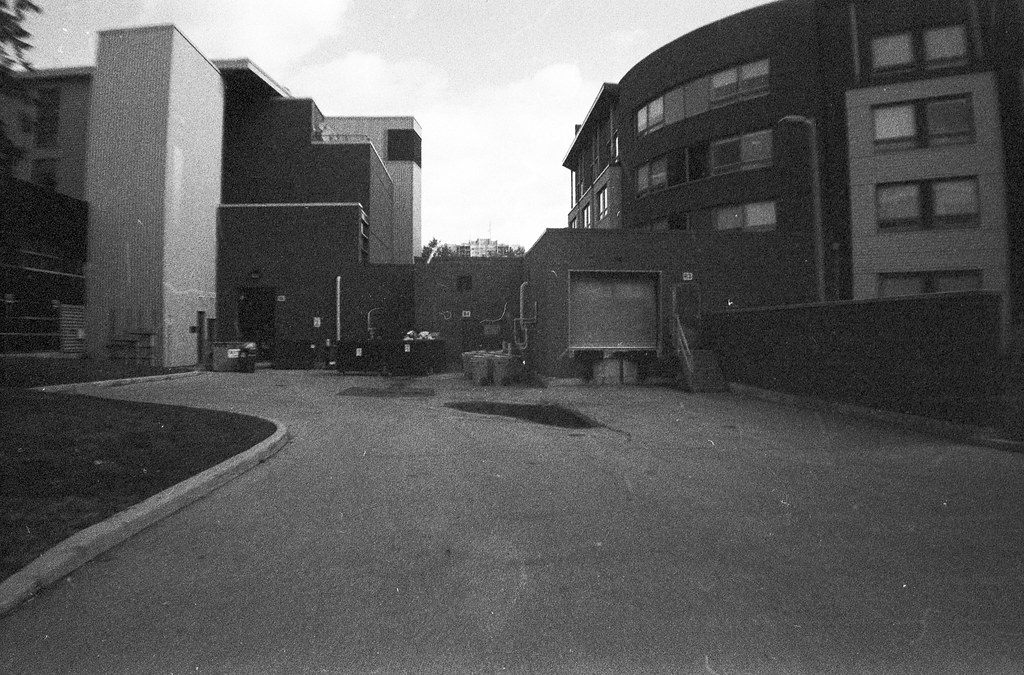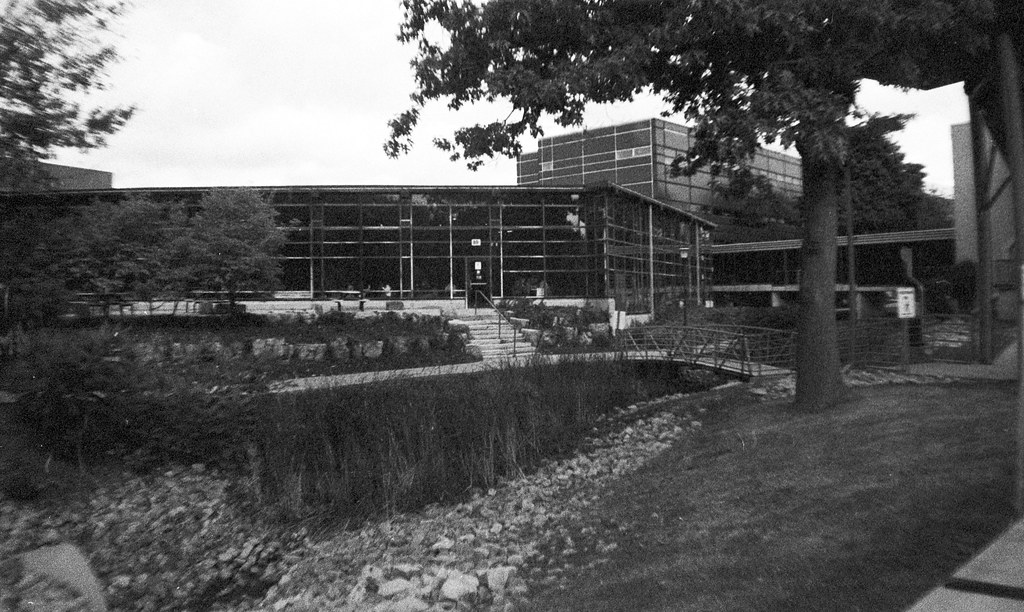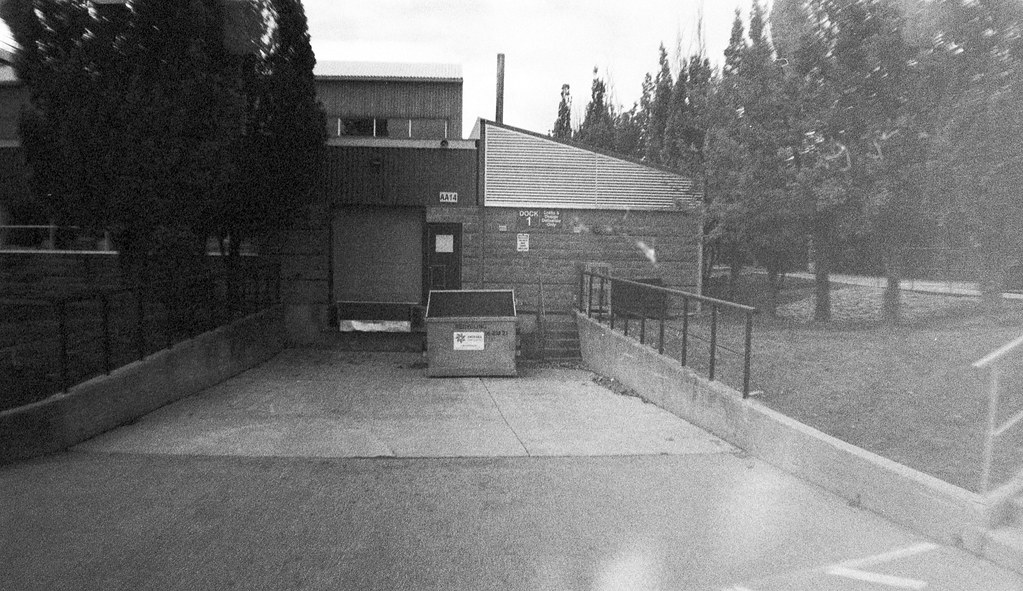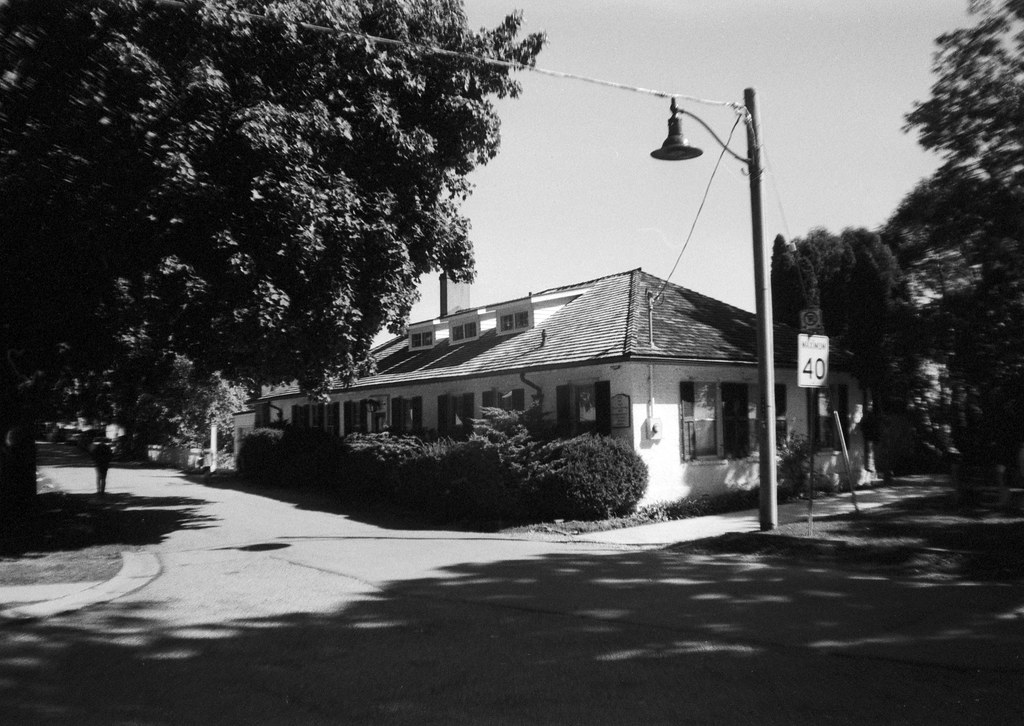If you want a simple answer to the question, why the heck am I reviewing a camera that isn’t precisely designed for use above the water, that answer is, I’m crazy. And by crazy, I mean some lenses work both underwater and on dry land with the Nikonos III, and the lens that only lens I have available isn’t designed for dry land. But the Nikonos line holds a unique spot in photography’s history, specifically Nikon. There are two reasons for this. First, the Nikonos line was the camera that made underwater photography accessible, and two, it was the last camera to have a foundation on the grandfather of underwater cameras, the Calypso. To give myself the best possible chance, I went with 400-speed films to try and get the broadest possible depth-of-field to overcome the optics explicitly designed for underwater use, so things are going to get weird. Thanks to James Lee for loaning out this odd and significant camera.
Camera Specifications
Make: Nikon
Model: Nikonos III
Type: Underwater Camera
Format: 135 (35mm), 36x24mm
Lens: Interchangeable, Nikonos Mount
Shutter: Vertical Focal Plane Shutter, 1/30″ – 1/500″ + Bulb
Year of Manufacture: 1975-80
Background
As long as humankind has been exploring the underwater realm, the desire to bring back a visual record has driven camera makers to design either a housing or a camera that could survive the rigours of such an environment. Nikon’s first attempt at an underwater camera came in 1954 with the development of underwater housing for the S2 rangefinder and two lenses, the W.Nikkor 2.8cm f/3.5 and W.Nikkor 3.5cm f/2.5. But it resulted in a clunky hard-to-operate camera. Over in France, noted underwater explorer Jacques-Yves Cousteau worked with a French off-shore machinery company, La Spirotechnique, to produce a dedicated underwater camera. They took the name of Costeau’s ship and mythological sea nymph for the camera, the Calypso. Working with Teikoku Sanso K.K. to handle manufacturing, the Calypso hit the market in 1961, equipped with a SOM Berthiot 1:3.5 f=35 lens. And Nikon took notice and began negotiations to build and distribute the Calypso under their name. An agreement was reached, and Nikon got almost the whole world, while La Spirotechnique maintained the Euro-Zone and French markets. Nikon took the design and built its version of the Calypso, naming it Nikonos. One of the major differences is that Nikon used their lenses, using their earlier developed optical designs, with the W.Nikkor 35mm f/3.5 being released with the first launch of the Nikonos and followed up by the UW. Nikkor 28mm f/3.5. The Nikonos hit the markets in 1963 for ¥28,500 (¥134,743.44 or 1,278 CAD in 2022); within one year of the release, the camera averaged 1,300 units per month, with the European models being branded Calypso/Nikonos. Seeing the popularity, Nikon began to tweak the design, improving on a few trouble spots on the Nikonos. Designers replaced the post-type rewind knob with a traditional fold-out crank, and the pressure plate was changed to a top-hinge plate. Released in 1968, the Nikonos II carried a price tag of ¥23,000 (¥85,362.35 or 810 CAD in 2022). The Nikonos II proved a solid and popular design; the third version wasn’t released until 1975. The Nikonos III built on the advancements of the II and updated several more trouble spots. Nikon modified the viewfinder, and the second set of bright finders assisted with composing images using the W.Nikkor 80mm f/4 (released in 1969). The hinged pressure plate was also switched to a bottom hinge, making loading film into the camera easier. The film advance/release lever was enlarged, and the flash sync connector improved. The Nikonos III sold for ¥45,000 (¥86,727.61 or 822.85 CAD in 2022). The Nikonos III would be the final underwater camera design based on the original Calypso. Nikon did add a UW-Nikkor 15mm f/2.8 in 1972, and a second version came out in 1981. The first new design camera, the Nikonos IV-A took a more traditional approach to an underwater camera; it also added a TTL meter (which required a battery) and auto-exposure; the 1984 Nikonos V continued the new style but returned some manual functionality. Two additional lenses, an LW-Nikkor 28mm f/2.8 and UW-Nikkor 20mm f/2.8 were added to the catalogue in the mid-1980s. The Nikonos RS 1992 transformed the camera style with a proper SLR, autofocus, and autoexposure (a digital version of the Kodak DCS425 was also built). Still, the Nikonos RS only saw production until 1996, while the Nikonos V continued production and sales until 2001.




Impressions
Suppose you’re a fan of the James Bond series of films. In that case, you’ll probably recognise the Nikonos, as an original Calypso is featured in the movie Thunderball, but is a much higher spec and capability than the camera has in reality. It is certainly eye-catching, with an almost brick-like appearance. It’s big and bulky, but it won’t be an issue operating the camera if you’re underwater or wearing gloves. Yet, the Nikonos line is oddly handsome, playing for both form and function. But it is mostly about process, especially in an underwater environment. The primary controls are mounted on the lens, two large knobs on the barrel that control the aperture and focus, each colour coded with the silver handling the focus and black the aperture. A small shutter speed dial, with a unique film advance and shutter release paddle, certainly can help with single-hand operation. But it is also awkward to move your finger out of the way when the advance springs out after firing the shutter. And honestly, with a bit of work and looking at the manual to find the best way to hold the camera, the layout and control setup made sense once that was figured out. There are no electronics, but there is a single accessory shoe for mounting a dedicated underwater flash or a sports finder (similar to the one used with the Minolta Weathermatic). You can purchase a dedicated underwater flash unit with a reliable synchronisation cable that attaches to a connector on the camera’s baseplate. But you also can get a dedicated adapter and use standard flash units.




Experiences
The first thing to realise when working with the Nikonos III is that this camera is more at home underwater than on dry land. That doesn’t mean you cannot use it above ground, but it can be awkward. For this review, I did only use the camera above the water as I was unsure of the condition of the seals and o-rings, and while they did look good, I didn’t want to risk damaging a camera that does not belong to me. If you plan on using the camera underwater, I recommend having the seals checked and replaced if possible; the manual has instructions on how to replace these seals. The Nikonos III is a camera that you want to read the manual a couple of times before heading out into the field. No matter which environment you plan on using the Nikonos III in, you will want to load and unload your film in dry conditions. And doing so is a bit counter-intuitive if you’re used to traditional methods. Start by removing the lens, use the control knobs to pull the lens out slightly to release the lock, twist ninety degrees until it pops off, and turn the out case off using the strap lugs. It is much easier, but the leaver action takes practice. YOu will slide the entire case off, leaving the inner parts visible, flip the pressure plate down, load the film, put the plate back up, test one advance to ensure the film has caught, and then put the case back on. Advance and fire a couple of shots and then remount the lens. If you are using the camera above water, it is recommended to use a lens dedicated for both above and below water use. In my case, I only had a dedicated underwater lens. So to help mitigate the additional optical correction, I shot fast film and worked with apertures between f/11 and f/22. Thankfully, the lens has both an aperture and a focus scale with notches to indicate your depth of field; by using a 28mm lens and small apertures, I could maximise the depth of field to ensure that I could get some results from the images. The knobs and visual representation are excellent additions to help the photographer; they also typically make the camera a little more challenging to hold. The shutter and film advance are combined on a single paddle; press it fully to advance the film and cock it, then another push to trip the shutter. There is also a lock, so you don’t accidentally trip the shutter. The viewfinder is big and bright, much brighter than I expected, but it does make sense. The frame lines are also brilliant, and while they only represent a few focal lengths (28, 35, and 80), they give enough help for elemental composition. Rewinding the film is a bit more difficult; you need to set the shutter speed dial to R, press the advance into the ready position, lock it, and pull up the rewind knob before rewinding the film. You will know it works when you see the film counter go backwards. I didn’t do too well on the first go; I removed the film from the change bag. I followed the instructions for the second roll, but something didn’t go right again, so I left the camera together and removed the film from the change bag. Once rewound, remove the lens and the case to unload the film. If you don’t make it work, open the camera in a change bag and go from there.




Optics
The one thing that made the Nikonos line unique is that you can swap out the lenses. A modified bayonet mount, the Nikonos-Mount allowed users to swap out lenses (out of the water, of course); these lenses are cross-compatible across all Nikonos cameras, which means you can use the original L-Nikkor 35mm f/2.5 on your Nikonos V if you wanted. These are good-quality optics, so if you’re a fan of Nikkor glass, you won’t be disappointed. But there is a catch, not all lenses for the Nikkor line can be used underwater or above the water. Most lenses can be used either on dry land or underwater; only two can be used in both environments. You can tell the difference based on the letter designator; the LW-Nikkor glass is for above-the-water use only, and the only lens in this category is the 1984 28mm f/2.8. W-Nikkor lenses can be used above and below the water; this includes the 1963 35mm f/2.5 and the 1969 80mm f/4. The UW-Nikkors make up the bulk of the Nikonos optical catalogue; these are designed to only work under the water. These lenses include the 15mm f/2.8 (released in 1972 and 1981), the 20mm f/2.8 released in 1985 and the 28mm f/3.5 released in 1965. What makes these lenses challenging to use above the water is the front glass element that protects against the depths but also adjusts for the difference in refraction of light underwater. But if you stop the lenses down, most of these were shot from f/11 to f/22; you can get good results. These images aren’t perfect, there is lots of distortion, but they are in focus. You cannot use the Nikonos RS mount lenses on the original Nikonos cameras, as they are underwater versions of the Nikon F-Mount. Sea&Sea released a series of dedicated underwater lenses for the Nikonos-Mount and two other lenses from Subatec and Seacor.




Lowdown
The Nikonos III is not a camera for everyone; it’s weird, quirky and takes a lot of effort for simple tasks on land-based camera systems. But it is a unique piece of photographic history which makes it at least worthy of purchase for the collector. If you use it underwater, check over and replace the seals over the whole camera if needed. But if you’re looking for above-ground photography, get a lens dedicated to above-water applications or both. They are also surprisingly expensive, with units with the 35mm f/2.5 (the most desirable lens) running for 165-250$ on the used market, with the average price running at 200$. If you are looking for something a little more familiar with some level of automation, the Nikonos IV-A or V are your best choices as they have a more familiar look and feel. This fun and odd camera pushed me out of my comfort zone with my photography.
Further Reading
Don’t just take my word on the Nikonos III; you can check out the reviews by other awesome camera reviewers!
35mmc – The Nikon Nikonos III – Review and Photos From the Kayak
35mmc – Nikonos iii – a dry land one-roll review
Emulsive – 5 Frames of in-focus shots with a Nikonos III on Arista EDU Ultra 100
Eric Constantineau – Nikon Nikonos III Review
Oändlig – The Nikonos III

